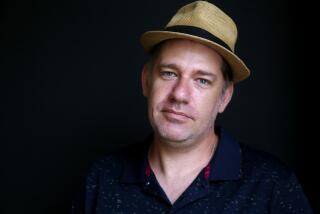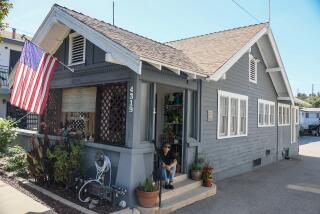Land Deal by Lindsay Aide Under Investigation : Probe: Deputy Sal Altamirano allegedly orchestrated a housing contract to a development team he had assembled behind the scenes. He denies any wrongdoing.
The district attorneyâs office is investigating whether a top aide to Councilman Gilbert Lindsay improperly influenced the award and subsequent cancellation of a proposed contract to build senior citizen apartments on city land later sold to a fund-raiser for Mayor Tom Bradley for a mini-mall.
The focus of the probe is Lindsayâs longtime deputy Sal Altamirano. According to information provided to the district attorney by city officials, Altamirano allegedly orchestrated the housing contract award to a development team he had assembled behind the scenes.
One of the developers was Edward C. Reyes, an Altamirano friend since junior high school. Another was Dynamic Builders Inc., a major political contributor in the city. A third was Arturo Ramos, a former member of the singing group the Ink Spots, who alleges that Altamirano killed the senior housing project in 1986 during a dispute over its control.
Public records show that less than one month after Ramos and Reyes formed Central City Planning and Development Corp., Altamirano paved the way for the development of low- and moderate-income senior citizen apartments on the land.
Later, as part of a two-man committee evaluating development proposals, Altamirano recommended that the City Council sell the land to his friendâs corporation over four competitors. Inexplicably, papers ranking the competing proposals were not filled out, according to documents on file in the cityâs Community Development Department.
In interviews with The Times, Altamirano offered contradictory accounts of his role in the matter, but insisted that he did nothing wrong.
He acknowledged that his efforts to sell the city land began after a discussion with Ramos and Reyes, but said their proposal to build 100 senior citizen apartments was selected on its merits. It was the only development plan, he said, that did not request taxpayer subsidies.
âI want to say that I was never promised anything (by the development team), I wasnât paid anything,â Altamirano volunteered. âMy only intent was to build housing.â
He conceded that âin hindsight,â he probably should have withdrawn from the selection committee because of his 30-year friendship with Reyes and a possible appearance of favoritism.
Altamirano insisted that it was not his fault that much-needed senior citizen housing was not built on the city-owned lots, located south of downtown in an impoverished area of Lindsayâs district. He said the housing probably would have been built by a developer if the land had not been sold to mayoral fund-raiser Allen E. Alevy and his wife for the expansion of their adjacent mini-mall.
âThe reason the project died,â Altamirano said, âwas because the Alevys wanted to buy the property. Simple as that. . . . I assume the mayor talked to the councilman because he (Lindsay) told me to sell the property to the Alevys.â
Lindsay said he stands behind his deputy.
âWhatever he has done, right or wrong, he was carrying out my request or order,â Lindsay declared. âHeâs as honest as the day is long.â
Lindsay also said he does not regret his involvement in helping Alevy buy land that had been slated for senior housing.
âItâs my district,â he said, âand Iâll do what I want to do. And the people keep reelecting me. . . . I got senior housing all over my district.â
Until now, the controversy surrounding the two long, narrow dirt lots on Martin Luther King Jr. Boulevard has centered on the mayorâs attempts in 1987 and 1988 to help Alevy buy them without a public auction. At the time, Alevy was organizing a series of fund-raising carnivals that generated at least $80,000 for the mayorâs reelection drive.
Alevy was allowed to purchase one 41,720-square-foot property without competitive bids, but was denied the second neighboring parcel when the city administrative office said it should be auctioned off to ensure that taxpayers received top dollar. Bradley has said that he did no more for Alevy than he does for any of his constituents.
Last fall, a story in The Times about the Bradley-Alevy connection prompted a city audit of the unusual land transactions. It was during this review that the allegations surrounding Lindsayâs office surfaced.
The city audit report, released two weeks ago, made only passing reference to the referral of information to the district attorneyâs office, saying it concerned events âwhich may have caused cancellation of the housing project.â The district attorneyâs office has refused to comment on the matter.
The Times has learned that the allegations against Altamirano came chiefly from the development teamâs president, Ramos, during questioning by city auditors.
It is unclear what happened during the approval and subsequent death of the housing venture because the key participants contradicted each other--and sometimes themselves--in interviews with The Times.
Public records make at least one thing clear: Altamirano abruptly derailed the housing development that he helped initiate. As a result, the mayorâs political ally was able to buy the land for commercial development.
Ramos, whose account triggered the district attorneyâs investigation, said that he told Altamirano in early 1985 that he wanted to build a senior citizen apartment complex on the property. Ramos said the council aide liked the idea and suggested that he include their mutual friend Reyes in the deal.
Ramos said he figured, âMaybe if I scratch his (Altamiranoâs) back, heâll scratch mine.â
Altamirano also requested that Ramos use a particular construction contractor, telling him that âthe councilman would like you to use Dynamic Builders,â according to Ramos.
âFar be it from me,â Ramos said, âto do something against the councilmanâs wishes.â
Ramosâ team and four other companies eventually responded to the cityâs published request for proposals to build apartments for seniors on the property. As Lindsayâs representative on a two-member selection committee, Altamirano and a top housing official picked Ramosâ team, a choice later routinely endorsed by the City Council.
Neither man could explain why their evaluation sheets in city files were not filled out. Both insisted that Ramosâ Central City firm was the clear choice because it alone asked for no city subsidies. As the project moved forward, Ramos said, Altamirano pressured him to relinquish more control to Reyes, with whom the council aide grew up and served in the Navy. In response, Ramos said he gave his power of attorney to Reyes so that he could run day-to-day operations.
Ramos said that when he later questioned how the project was being run, Altamirano and Reyes tried to push him further out.
He said Reyes warned him that, âIf you release yourself as president, this thing will go ahead smoothly. Otherwise, youâre not going to have a project.â He said Altamirano also told him to âmove out of the way because we canât trust you.â
Refusing, Ramos said he canceled the power of attorney to Reyes and scouted for new financing. City records show that until that point in mid-April of 1986, the project was racing through the City Hall bureaucracy. The only remaining obstacle was passage of a City Council ordinance transferring title of the land.
But records show that after the power of attorney was canceled, Altamirano blocked the project by directing that the paperwork be sent back to Lindsayâs office, where it remained indefinitely.
Meanwhile, Reyes and Dynamic Builders pulled out of the project, leaving Ramos with no contractor, architect or financing. Undeterred, Ramos informed city housing officials in a November, 1986, letter that he had assembled another team. When he didnât hear back, Ramos said he went to Altamirano.
âWell, the mayor has decided to give the land to some person who owns a liquor store,â he quoted Altamirano as saying.
âI said, âSal, that doesnât make any sense. That was needed housing. That doesnât make sense coming from Tom Bradley.â He said, âIf I were you, Iâd leave it alone.â â
With that, Ramos said, he abandoned his efforts, contending that the project died because he refused to be âa puppet.â
In two interviews, Altamirano offered directly conflicting versions of his role in the housing proposal.
He first acknowledged suggesting that Ramos and Reyes team up. âI said, âWhy donât you submit a proposal?â And they did. But (it) had to be competitive.â
Altamirano minimized his participation on the two-man selection committee, saying: âI really didnât make the selection. I wasnât pushing them (Central City).â He said the other member, ex-housing Director Craig Avery of the Community Development Department, decided it was the best proposal.
Avery, when contacted by The Times, said he had no comment on the council deputyâs recollections or role in the selection.
Altamirano also denied that he told Ramos to use Dynamic Builders. âI think Ramos asked who the best builder in town was, who does the most building downtown,â Altamirano said. âI told him Dynamic Builders.â
He said he sidetracked Central Cityâs proposal because there were financing problems and Ramos was trying to sell the project out from under his partners. It was around this time, Altamirano added, that âthe Alevys surfaced.â
The day after his first interview, Altamirano telephoned The Times, saying Reyes had refreshed his memory and that his earlier comments were âincorrect.â
Altamirano said he did not recommend that Reyes and Ramos submit a housing proposal. He said the two men had approached him with the proposal.
He also said he never mentioned Dynamic Builders as a possible developer. It was Reyes, he said, who was entirely responsible for bringing Dynamic into the deal. âI was talking off the top of my head,â he said.
Reyes, now a grading inspector in the cityâs building and safety department, said that he recommended Dynamic Builders because he had worked there and knew company President Ramon Bonin. Without Dynamic, Reyes said, Ramos would not have been able to finance the development.
Reyes said that Dynamic and he abandoned the venture solely because Ramos had been dealing behind their backs. âArt (Ramos) was trying to ace everybody out,â he said.
Dynamicâs Bonin did not return phone calls by The Times. Since 1984, his company and its employees have contributed nearly $150,000 to the campaigns of various city politicians, most of it to Bradley. Lindsay has received $3,500.
Whatever the reasons, the dispute between the players delayed construction to a point where city housing Director Ralph Esparza said he believed senior housing was no longer feasible. Changes in federal tax laws, he explained, had reduced government rent subsidies for such developments.
In a memo to city real estate officials, Esparza said the land was no longer suitable for a residential project and should âbe given full consideration for commercial development.â
Esparza said that although he had reached this conclusion independently, he wrote the memo after a call from the mayor inquiring about âthe statusâ of the land that Alevy later bought.
Alevy has yet to break ground on the site.
More to Read
Sign up for Essential California
The most important California stories and recommendations in your inbox every morning.
You may occasionally receive promotional content from the Los Angeles Times.










